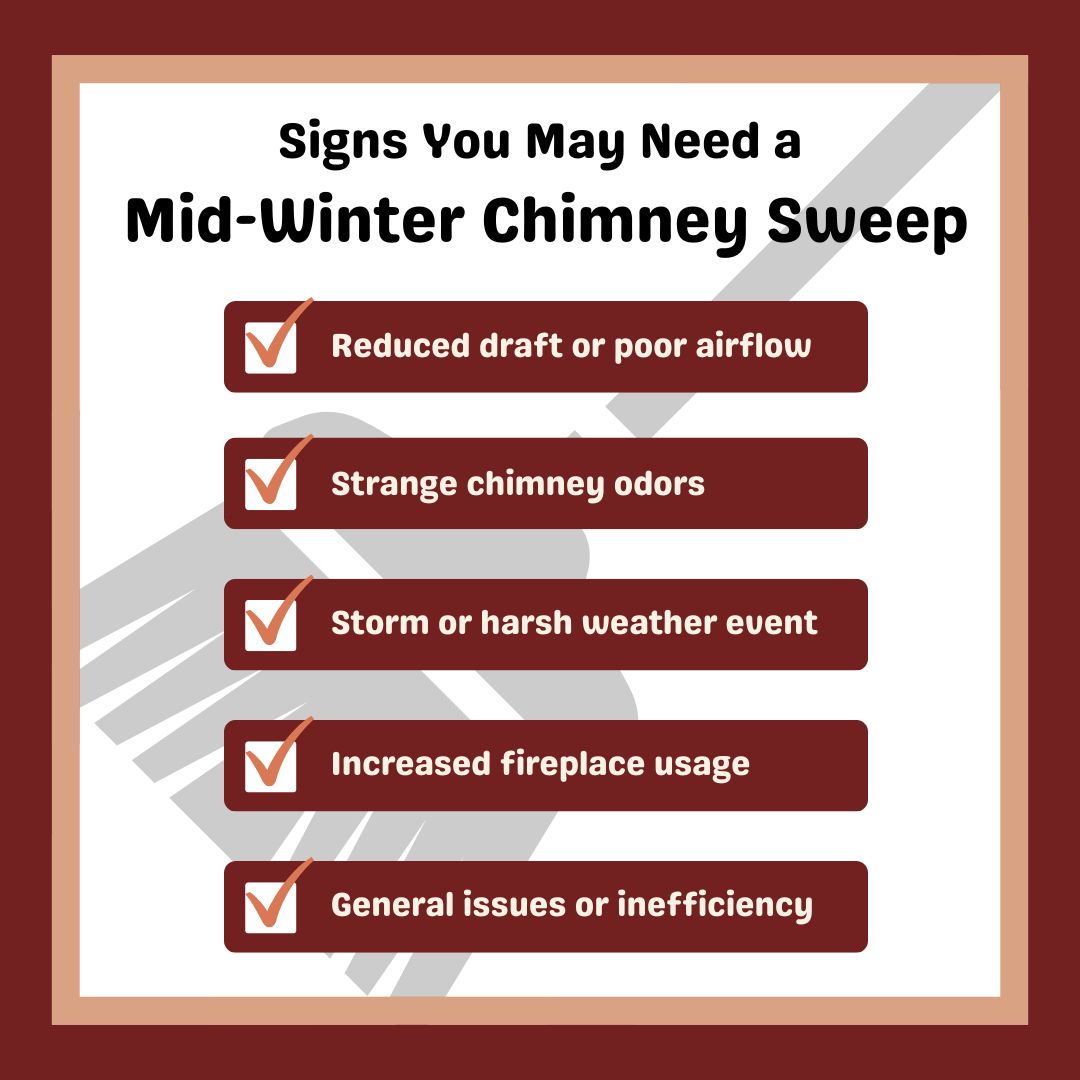For many people, this is the season their fireplaces get used the most. They add a luxurious seasonal ambiance, and there’s no doubt they make the holidays more festive. …but the bump in use might have you wondering – does my chimney need some attention?
How Often Should My Chimney Be Swept?
The general rule for chimney sweeping is to have it done once a year – typically, this is sufficient. This means that if you have your chimney inspected and swept at the beginning of the normal burning season, that should carry you through the winter. And if you haven’t had your chimney swept this year, it’s never too late to get it on the schedule, even if it is in the thick of the season you use it the most.
As a matter of fact, one of the perks of living here in the Ormond Beach and Orlando area – where winters are milder – is that cooler weather conditions typically don’t raise extra complications for chimney maintenance tasks.
Signs You May Need a Mid-Winter Chimney Sweep
Now, there are some indicators that could prompt you to schedule a mid-winter sweep, regardless of when your last one was. If you notice any of the following, don’t hesitate to reach out, even if you’ve already had your annual maintenance completed.

Reduced Draft
If you’re noticing poor airflow related to your fireplace, your chimney may need sweeping. An obvious sign is smoking backing up into the room instead of being drawn up the chimney. Difficulty lighting and sustaining a good blaze may be another one. Ventilation struggles can be caused by blockages, such as excess creosote build up, debris, or even a bird’s nest in your flue. These are safety risks – you don’t want smoke or hazardous combustion gases in your living space, and blockages can also put you at increased risk of a chimney fire.
If you’re having trouble with draft or your fires aren’t burning as efficiently or hot as usual, it might be time for a mid-winter sweep.
Strange Odors
No one wants weird smells in their house. The unpleasantness factor alone may be enough to have you reaching out for your friendly neighborhood chimney sweep. But there are further reasons smells should prompt that phone call. If you start to notice a strange smell emanating from the chimney, it could be a sign of creosote buildup or trapped moisture in the system – both of which are enemies of a healthy chimney.
In short, persistent chimney odors – which may also get stronger when you first light a fire – might be pointing to the presence of accumulated organic matter in your system, which definitely warrants an inspection and possibly a sweep.
A Storm or Natural Event
We might not be known for snowstorms, but that doesn’t mean we don’t get extreme weather. Storms, especially those bringing heavy rain and wind, can introduce debris into your chimney. They can also cause physical damage to the chimney itself. And, of course, Floridians are no strangers to lightning strikes. If you’ve undergone a severe weather event, it’s a good idea to schedule an inspection to make sure your chimney system is still in good shape and operating as it should – and that no foreign matter is blocking the flue.
Increased Fireplace Use
If you’ve been using your fireplace with greater frequency than normal, you may reach a point where your chimney needs some extra TLC. The more often you use your chimney, the faster creosote and other residues will accumulate – so with lots of use, an additional sweeping may be warranted. If you’ve been burning more often than normal, it doesn’t hurt to check in with your chimney professional to make sure things are still operating as safely and efficiently as possible.
How Should I Care for My Chimney Between Sweepings?
Regular chimney inspections and sweepings are indispensable to maintaining a safer and more efficient fireplace…but the way you use your fireplace also contributes to the condition of your chimney. Here’s what can help:
- Burn only dry, seasoned firewood. Wet or newly-cut wood burns poorly, creating less heat – and more smoke and creosote. Well seasoned firewood keeps your chimney clearer, longer.
Use your fireplace according to manufacturer guidelines. Know them, and follow them. For example, you shouldn’t overload your fireplace with wood, and you should never burn trash (or anything except seasoned wood). This will give you cleaner fires, preserving indoor air quality, safety, and the wellbeing of your chimney. - Be attentive to potential issues. Quick visual inspections of your chimney’s exterior and attentiveness to the quality of your fires will help clue you in earlier if there’s an issue in your flue.
- Use a chimney cap. Perched at the top of your system, this small-but-mighty component helps keep debris, animals, and rainwater from entering your chimney. This in turns keeps it cleaner and less vulnerable to moisture-related damage.
By being diligent about maintenance, you can keep your fireplace just as you want it to be – a comfortable retreat space. This involves good regular use practices and partnership with our team of reliable, certified pros. If you suspect you need a mid-season sweep – or other repairs or upgrades – you can count on us to bring you the knowledgeable service you need.
We’re Here to Serve in Any Season
If you’ve waited for your chimney sweeping and are worried about having it done mid-season, have no fear. Our experienced team is always available to help. And because safety is a primary concern, we’d encourage you to reach out as soon as possible.
Once you’re squared away, consider scheduling your next sweeping ahead of time. This step can set your mind at ease, knowing your slot is reserved and that your system is benefitting from consistent, routine maintenance. Early scheduling usually means fewer interruptions to use during prime burning season, and helps you avoid any issues with your chimney company’s availability during times of high demand.
Let’s get started. Call or reach out online now.

Recent Comments